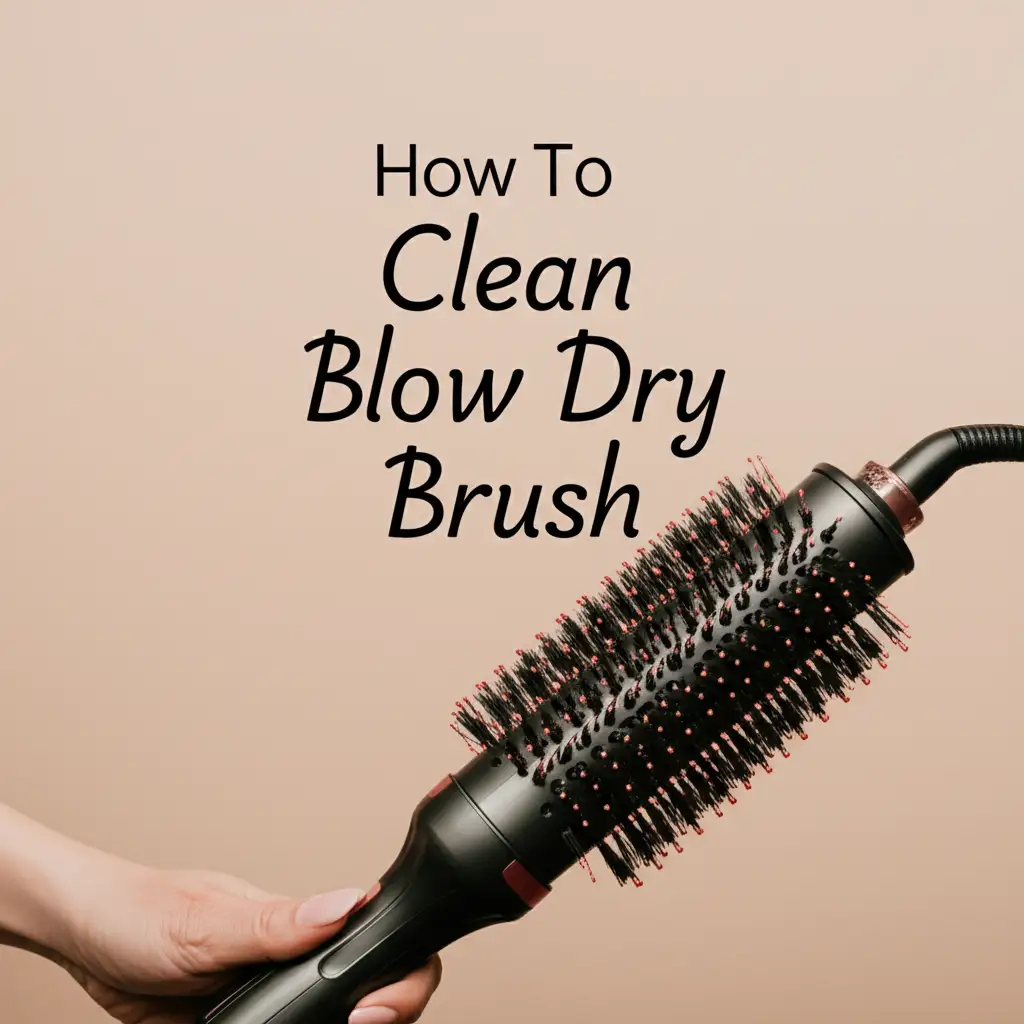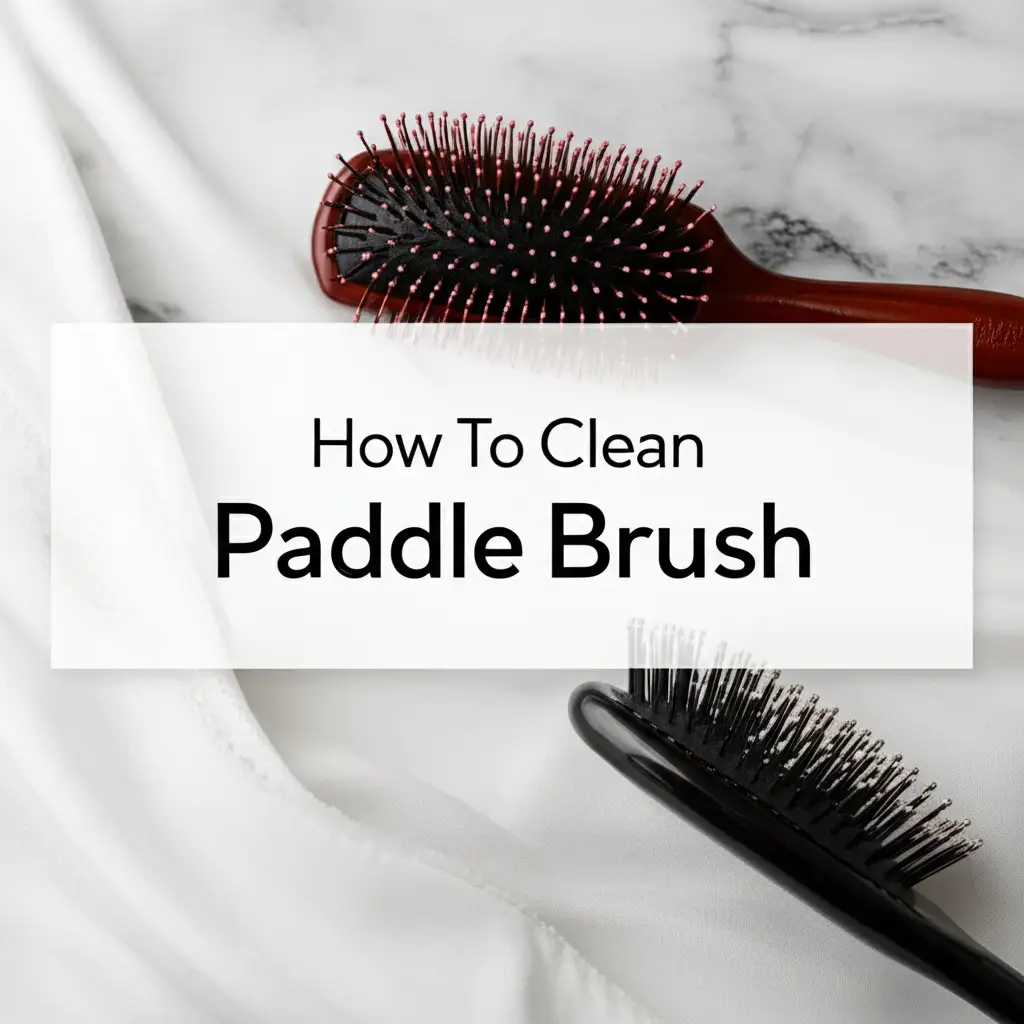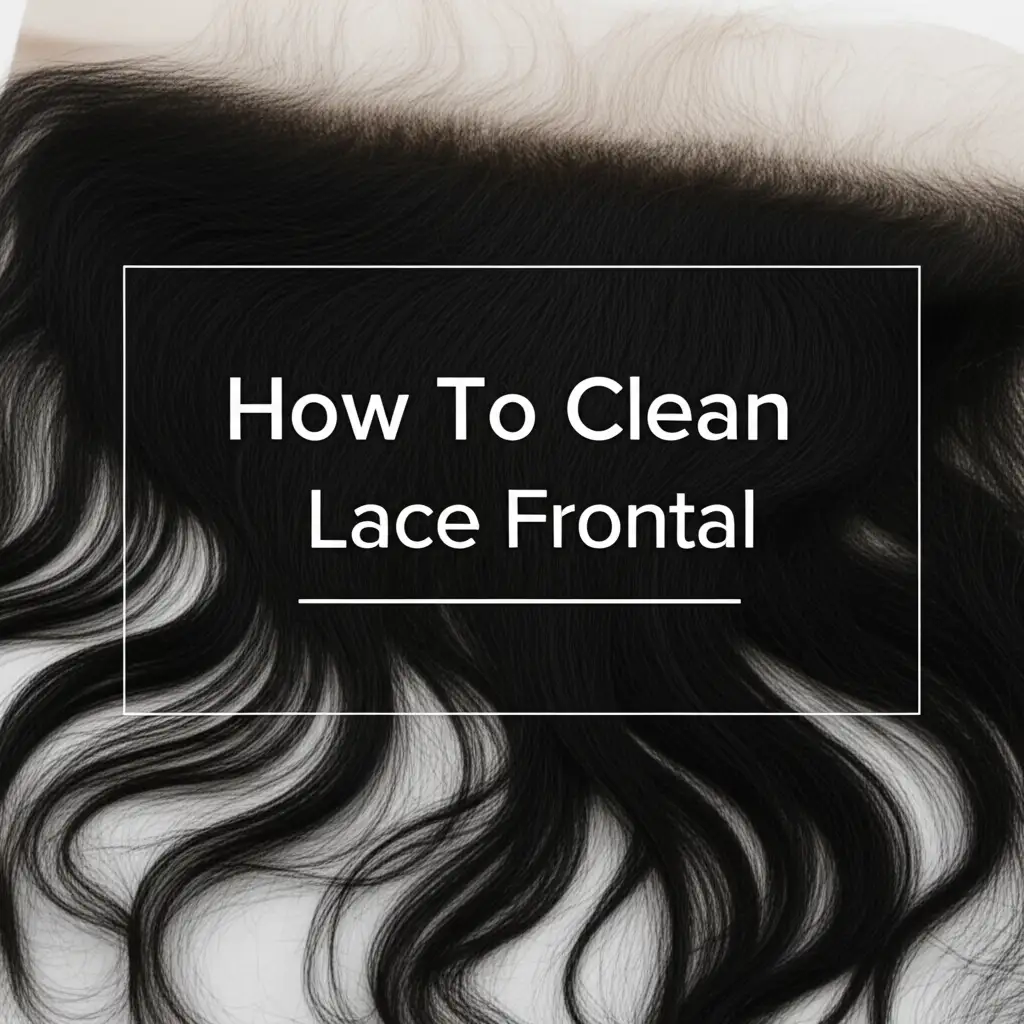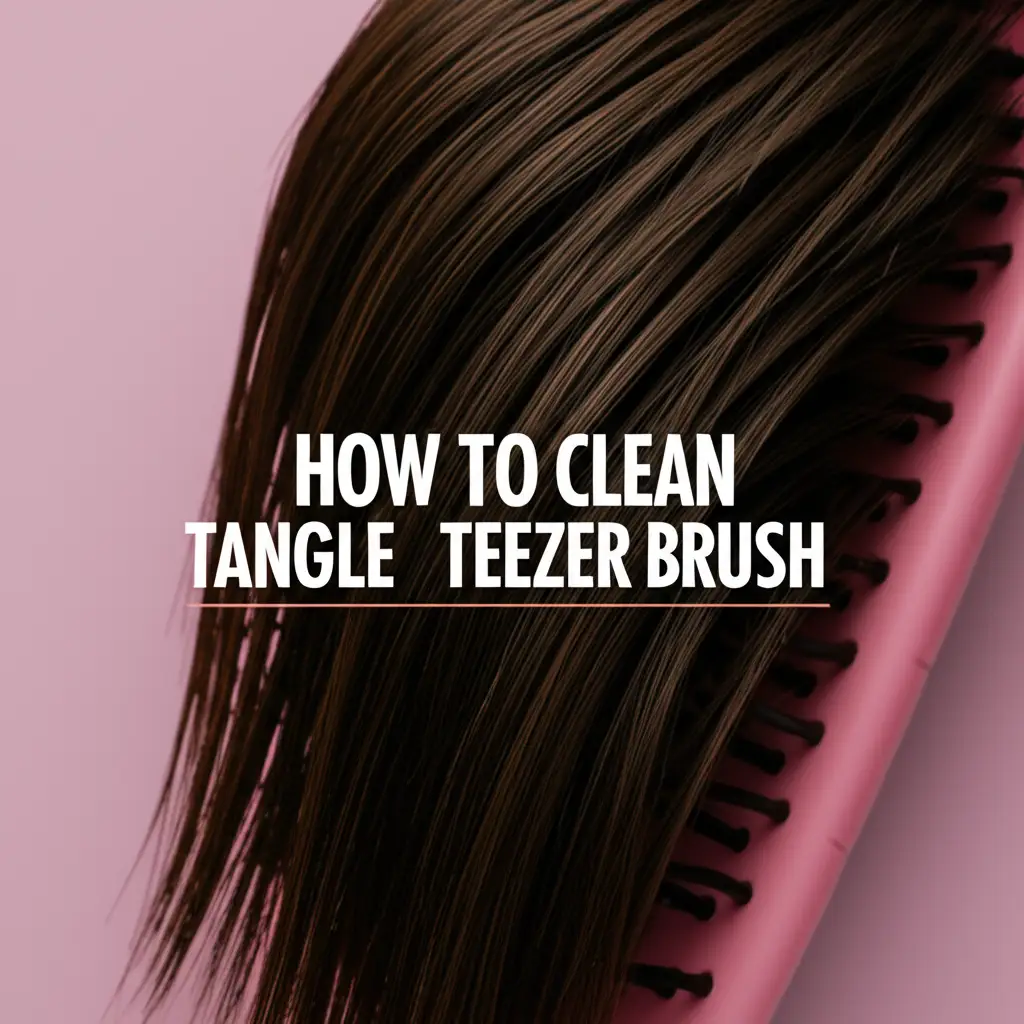· Hair Brush Cleaning · 15 min read
How To Clean Boar Bristle Brush
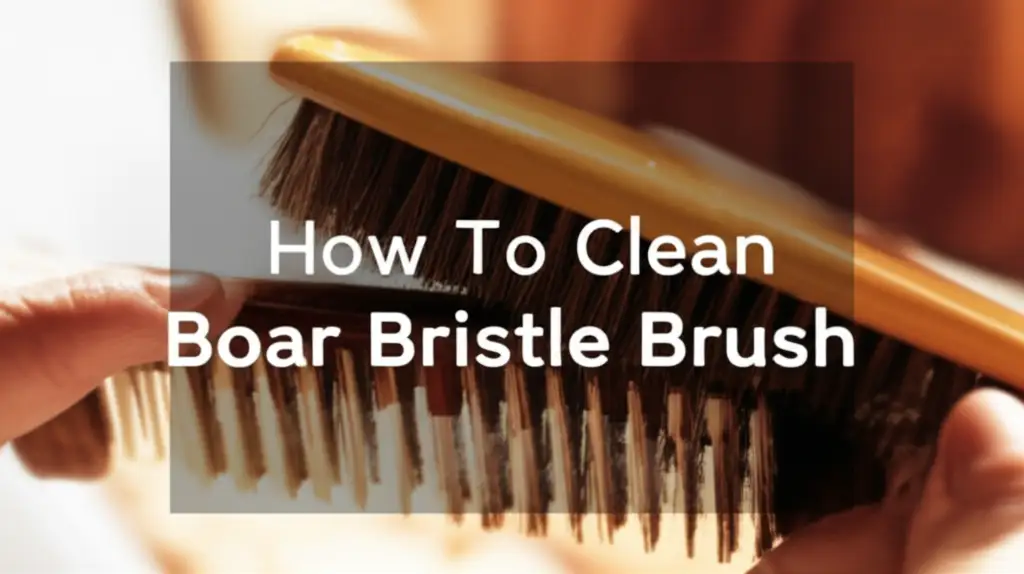
Clean Your Boar Bristle Brush: A Complete Guide
Have you ever looked at your boar bristle brush and wondered if it’s doing more harm than good? A dirty hairbrush can transfer oils, dust, and old product back onto your clean hair. This defeats the purpose of washing your hair. I know I have found my brush looking a bit sad over time.
Boar bristle brushes are fantastic for distributing natural oils, creating shine, and promoting healthy hair. They work wonders, but only if they are clean. Learning how to clean boar bristle brush properly is key to maintaining its performance and your hair’s health. This article will show you simple steps to get your brush sparkling again. We will cover necessary supplies, detailed cleaning methods, and tips for ongoing care.
Takeaway:
- Regularly remove hair from your boar bristle brush.
- Use mild soap and warm water for cleaning.
- Avoid soaking the brush base.
- Always air dry the brush bristles-down on a towel.
A boar bristle brush needs regular cleaning to work its best. You clean your boar bristle brush by first removing loose hair. Then, you gently wash the bristles with mild soap and warm water. Finally, you rinse it well and allow it to air dry completely.
Why Cleaning Your Boar Bristle Brush Matters for Hair Health
Your boar bristle brush does an excellent job of spreading your hair’s natural oils. This process helps your hair look shiny and healthy. However, over time, these natural oils, along with dead skin cells, dust, and hair product residue, build up on the bristles. This accumulation makes your brush less effective.
A dirty brush can also become a breeding ground for bacteria and fungi. When you use a dirty brush, you transfer all this buildup directly onto your clean hair and scalp. This can make your hair look greasy faster, even right after washing. It can also lead to scalp irritation or other issues.
Cleaning your boar bristle brush regularly is not just about hygiene; it is about protecting your hair’s health. A clean brush performs better. It distributes oils more evenly and detangles hair without pulling. This simple step extends the life of your valuable brush. It ensures your hair gets all the benefits it deserves.
Ignoring brush cleaning can also make your hair feel dull and lifeless. The bristles become coated, which reduces their ability to smooth the hair cuticle. This means less shine and more tangles. I always feel better knowing my tools are clean before I use them. It feels good for my hair, too.
Gathering Your Essential Cleaning Supplies
Cleaning your boar bristle brush does not require many special tools. You likely have most of these items already at home. Having everything ready before you start makes the cleaning process smooth and easy. I always lay out my supplies on the counter first.
First, you will need a fine-tooth comb or a toothpick. These tools are perfect for removing trapped hair from deep within the bristles. They can reach those stubborn strands that get caught at the base. Make sure your comb has sturdy teeth.
Next, you need a mild shampoo or gentle soap. Baby shampoo is an excellent choice because it is formulated to be gentle. You can also use a mild hand soap or a diluted dish soap. Avoid harsh detergents or strong chemicals. These can damage the natural bristles.
You will also need a bowl of warm water. The water should be warm, not hot. Hot water can loosen the glue that holds the bristles or crack the brush handle. Warm water helps dissolve oils and product buildup effectively. A clean towel is also necessary for drying.
Finally, having a pair of scissors can be helpful for cutting out very tangled hair clumps. Sometimes, hair wraps so tightly around the bristles that a comb alone is not enough. With these simple items, you are ready to begin the cleaning process. It is surprising how effective everyday items can be.
Step-by-Step Guide to Cleaning Your Boar Bristle Brush
Cleaning your boar bristle brush correctly ensures it lasts longer and keeps your hair healthy. I follow these steps every time. It is a simple routine that makes a big difference. This method focuses on gentle yet effective cleaning.
Step 1: Remove Loose Hair Thoroughly
The first and most important step is to remove all loose hair from the brush. Hair strands trap dirt, oil, and product residue. If you do not remove them, the cleaning solution cannot reach the bristles effectively. This step is crucial for a truly clean brush.
I usually use a comb with a pointed tail to lift hair out. You can also use a pair of tweezers or even your fingers. Start from one side of the brush and work your way across. Slide the comb under the hair at the base of the bristles and gently lift it out. For very stubborn or matted hair, a small pair of scissors can help. Carefully snip through the hair without touching the bristles or the brush base. This makes removal much easier.
Step 2: Prepare a Gentle Cleaning Solution
Once all the hair is gone, it is time to prepare your cleaning bath. You need a solution that is strong enough to cut through grease but gentle enough not to harm the natural bristles. I always grab my mild shampoo for this part.
Fill a small bowl or basin with lukewarm water. Add a few drops of mild shampoo or gentle soap to the water. Swirl the water gently to mix the soap. You want a soapy solution, not a sudsy one. Too much foam can make rinsing difficult. Remember, the goal is to clean, not to strip.
Step 3: Submerge and Swirl (Carefully!)
Now, it is time to wash the bristles. This is the most important part of the process. You need to be careful not to get the brush handle or base too wet, especially if it is made of wood. Wood can warp or crack if it absorbs too much water.
Dip only the bristles of your boar bristle brush into the soapy water. Avoid submerging the entire brush. Gently swirl the brush bristles around in the solution. You can also use your fingers to gently massage the bristles. This helps loosen any caked-on dirt, oil, or product buildup. Pay attention to the base of the bristles where buildup tends to accumulate. For brushes like a Mason Pearson brush, which often feature boar bristles, this careful approach is especially important to preserve their quality.
Step 4: Rinse Thoroughly to Remove Soap Residue
After gently cleaning the bristles, rinse them very well. Soap residue left on the brush can transfer to your hair, making it feel sticky or dull. Proper rinsing is essential for a truly clean brush.
Hold the brush under cool, running water. Angle the brush so the water runs from the top of the bristles downwards. This prevents water from soaking into the brush base. Continue rinsing until no more soap bubbles appear. You want the water to run clear. I sometimes give the bristles a gentle squeeze to check for any hidden soap.
Step 5: Dry Properly to Prevent Damage
Drying your boar bristle brush correctly is as important as cleaning it. Incorrect drying can lead to mold growth, damaged bristles, or a cracked handle. Patience is key here. Do not rush the drying process.
First, gently shake the brush to remove excess water. Then, lay the brush bristles-down on a clean, dry towel. This position allows air to circulate around the bristles and prevents water from pooling at the base. You can also prop it up on its side. Let the brush air dry completely. This can take several hours or even overnight. Keep it in a well-ventilated area, away from direct heat sources like radiators or sunlight. Using a blow dryer can damage the bristles and handle.
Advanced Cleaning for Stubborn Buildup
Sometimes, a simple wash might not be enough to clean your boar bristle brush. Hair products, natural oils, and environmental dust can create very stubborn buildup over time. When your brush still feels sticky or looks dull after a regular wash, it needs a deeper clean. I have found certain methods work wonders for these tough cases. This advanced cleaning focuses on breaking down the persistent grime.
One effective solution for heavy oil and product buildup is baking soda. Baking soda is a natural deodorizer and a mild abrasive. You can make a paste by mixing a small amount of baking soda with water. Apply this paste directly to the bristles. Gently work it in with your fingers. Let it sit for a few minutes, then rinse thoroughly as described in Step 4. This method can help remove stubborn buildup that a simple shampoo might miss.
For hard water stains or lingering odors, white vinegar is an excellent choice. Vinegar is acidic and helps dissolve mineral deposits and neutralize smells. Mix equal parts white vinegar and water in a bowl. Dip only the bristles into this solution for about 10-15 minutes. Swirl gently. Afterward, rinse the brush extremely well with cool water to remove all traces of vinegar. If you notice a clean brush stain, a vinegar rinse can sometimes help lift it. Be sure to dry it completely to avoid issues like mold; if you ever encounter mold, you can typically clean mold with vinegar as well.
Remember, always be gentle during these advanced cleaning methods. The goal is to clean the brush without damaging the natural bristles or the handle. Follow up with proper drying every time. These deeper cleaning steps only need to be done every few months. Regular simple washes prevent the need for frequent advanced cleaning.
Maintaining Your Boar Bristle Brush Between Washes
Cleaning your boar bristle brush thoroughly is important, but daily maintenance keeps it cleaner for longer. These small habits reduce the amount of dirt and oil that accumulate. They also make your deep cleaning sessions much easier. I practice these steps myself to keep my brush in top shape.
First, remove hair from your brush after every use. This is the simplest and most effective daily habit. Use a comb or your fingers to pull out any trapped hair. If hair remains, it collects dust, oils, and product residue. Taking a few seconds to do this saves you a lot of effort later.
Second, consider wiping down the brush handle and base with a damp cloth. This removes any surface dirt or product residue that might have transferred from your hands. It keeps the entire brush hygienic and looking fresh. This quick wipe down takes almost no time.
Store your brush properly. Do not leave it lying on a damp counter or in a dusty drawer. Keep it in a dry, clean place. If you use it as a blow-dry brush, make sure it cools completely before storage. Proper storage helps prevent moisture buildup and keeps the bristles from bending.
How often you deep clean your brush depends on how frequently you use it and what products you use on your hair. If you use many styling products, or brush your hair daily, you might need to deep clean every 2-3 weeks. For less frequent use or minimal product, monthly cleaning might be enough. Always observe your brush. If it looks dull, feels sticky, or smells off, it is time for a wash. Regular maintenance makes the big cleans less frequent.
Common Mistakes to Avoid When Cleaning
Cleaning your boar bristle brush might seem straightforward, but there are common pitfalls that can damage it. Avoiding these mistakes ensures your brush remains effective and lasts for a long time. I have learned these lessons over the years, sometimes the hard way. Knowing what not to do is just as important as knowing what to do.
One major mistake is soaking the entire brush, especially if it has a wooden handle. Wood is porous and absorbs water. This can cause the wood to swell, crack, or even grow mold. The glue holding the bristles can also weaken. Always focus on cleaning just the bristles and avoid submerging the handle. Keep the base of the bristles as dry as possible.
Using harsh chemicals is another common error. Bleach, strong detergents, or abrasive cleaners can strip the natural oils from the boar bristles. This makes them brittle and less effective at distributing your hair’s natural oils. These chemicals can also damage the brush material or cause skin irritation. Stick to mild shampoos or gentle soaps.
Drying the brush vertically with the bristles pointing up can also be problematic. Water can drip down into the brush base and get trapped. This leads to the same issues as soaking the brush. Always lay the brush bristles-down on a towel or prop it up on its side to allow proper air circulation. This ensures water drains away from the base.
Finally, do not use excessive heat to dry your brush. A hairdryer on a high setting or placing the brush on a radiator can damage the bristles. High heat can melt synthetic components or make natural bristles brittle. Always opt for air drying. Patience in drying preserves your brush’s integrity. Avoiding these simple mistakes ensures your boar bristle brush serves you well for years.
When to Consider Replacing Your Boar Bristle Brush
Even with the best care and regular cleaning, a boar bristle brush will not last forever. Like any tool, it has a lifespan. Knowing when to replace your brush is important for your hair health and brushing effectiveness. Using a worn-out brush can be counterproductive, even if it is clean. I watch for these signs to know when it is time to buy a new one.
One clear sign is when the bristles become bent, splayed, or start falling out. Boar bristles are sturdy, but continuous use wears them down. If the bristles are no longer standing straight or they are missing in patches, the brush cannot effectively detangle or distribute oils. It loses its ability to perform its primary functions.
Check the brush handle and base for damage. Cracks in the handle, a loose head, or signs of mold that will not go away are all reasons for replacement. These issues can make the brush uncomfortable to hold or harbor bacteria. A damaged handle also indicates structural weakness.
A persistent, unpleasant odor is another red flag. If you have cleaned your brush thoroughly, perhaps even with advanced methods like a vinegar rinse, and it still smells bad, it might be beyond saving. This could indicate deep-seated mold or bacterial growth that cannot be removed. You do not want to transfer those smells or microbes to your clean hair.
Finally, if your brush simply is not performing as well as it used to, despite being clean, it might be time for an upgrade. Perhaps it no longer smooths your hair as effectively or struggles with tangles. This indicates the bristles have lost their strength or integrity. Replacing your brush ensures you always have the best tool for your hair.
FAQ Section
Q1: How often should I clean my boar bristle brush?
You should remove loose hair from your boar bristle brush after every use. A light wash with mild soap and water is good every 1-2 weeks. For a deep clean to remove product buildup, aim for once a month. If you use many styling products, you might need to deep clean more often.
Q2: Can I use regular soap to clean my boar bristle brush?
Yes, you can use regular soap, but it must be a mild one. Baby shampoo or a gentle hand soap works best. Avoid harsh dish detergents or strong chemical cleaners. These can strip the natural oils from the boar bristles and damage them. Stick to gentle formulas for best results.
Q3: How do I dry my boar bristle brush without damaging it?
After washing, gently shake out excess water. Then, lay the brush bristles-down on a clean, dry towel. This position allows air to circulate and prevents water from pooling at the base. Let it air dry completely in a well-ventilated area. Avoid using heat like a hairdryer, as this can damage the bristles or handle.
Q4: What if my boar bristle brush smells bad after cleaning?
If your boar bristle brush still smells bad after a regular wash, it may have stubborn residue or even mold. Try an advanced cleaning method using a white vinegar and water solution (equal parts). Dip only the bristles for 10-15 minutes, then rinse very well. Ensure it dries completely to prevent future odors.
Q5: Can I use boiling water to sanitize my brush?
No, you should not use boiling water to clean your boar bristle brush. Boiling water can damage the natural bristles, warp the brush handle, or melt the glue that holds the bristles in place. Always use lukewarm or cool water for cleaning. High heat is detrimental to the brush’s integrity.
Q6: Is it okay to use a hair dryer to speed up drying?
Using a hair dryer is not recommended for speeding up the drying process of your boar bristle brush. The high heat can make the natural bristles brittle and prone to breakage. It can also cause the brush’s handle to crack or warp. Air drying is always the safest and best method for preserving your brush.
Conclusion
A clean boar bristle brush is a truly essential tool for healthy, shiny hair. I have seen the difference it makes in my own hair care routine. We have walked through the simple yet effective steps on how to clean boar bristle brush properly. This includes removing hair, using a gentle cleaning solution, rinsing thoroughly, and drying correctly. You now know the secrets to keeping your brush in top condition.
Regular maintenance and avoiding common cleaning mistakes will extend your brush’s life. It also ensures it performs its best every single day. Remember, a hygienic brush prevents the transfer of dirt and oils back to your clean hair. This keeps your scalp and hair feeling fresh. Make cleaning your boar bristle brush a consistent part of your beauty regimen. Your hair will certainly thank you for it. Start cleaning your brush today and enjoy the benefits of a truly spotless tool!
- boar bristle brush cleaning
- hair brush maintenance
- clean hairbrush
- natural bristles
- hair care tips

